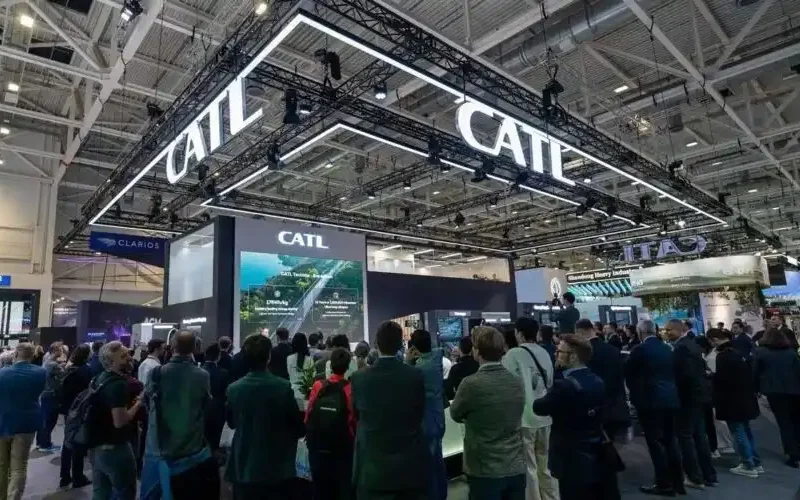Chinese battery giant CATL used its April 21 “Tech Day” in Shanghai to reveal two headline-grabbing technologies.
- The second-generation Shenxing Superfast-Charging pack can add about 520 km (323 mi) of driving range in just five minutes, eclipsing BYD’s March record of roughly 470 km on the same charge time.
- CATL also unwrapped Naxtra, the world’s first mass-production sodium-ion EV battery, slated for starter-battery output in June and full EV packs by December 2025.
Why the specs matter
CATL says Naxtra reaches 175 Wh kg⁻¹, almost on par with mainstream lithium-iron-phosphate (LFP) cells, but uses abundant, low-cost sodium and skips cobalt, nickel and graphite. That combination could undercut today’s LFP costs—crucial as automakers angle for cheaper entry-level EVs—and improves cold-weather performance, a traditional weak spot for LFP and NMC chemistries.
A new gap with BYD
BYD, CATL’s fiercest domestic rival, showed a prototype seven-minute fast-charging pack at the end of 2023 but still lacks a market-ready sodium-ion car. CATL’s 520-km/5-min headline figure narrows BYD’s marketing edge in fast charge and, if real-world results corroborate CATL’s claim, may shift fleet buyers toward Shenxing-equipped models—67 Chinese nameplates are already lined up for 2025 adoption.
What it means for Tesla
Tesla buys more batteries from CATL than from any other supplier, especially for its Shanghai-built Model 3 and Model Y. A viable 5-minute Charge-to-Full option would give Tesla an answer to BYD’s accelerating domestic sales and open the door to shorter dwell times at Superchargers, a metric Musk says is key to network profitability. However, Tesla’s imported Model S/X lines just ran into tariff turbulence: after U.S. duties on Chinese goods rose to 145 %, Beijing retaliated, lifting tariffs on American imports to 125 %, prompting Tesla to suspend new S/X orders in China. Those same tariffs could complicate future plans to ship Shenxing-equipped U.S. vehicles back into China—or to export CATL packs the other way.
The tariff overhang
CATL itself is caught in the cross-fire. U.S. duties of up to 145 % on Chinese batteries—and the Pentagon’s decision to place CATL on a “military-affiliation” watch list—raise the landed cost of CATL cells for North-American-built Teslas (Cybercab, Semi) and could nudge Tesla to source more batteries from its Nevada and Texas plants or from LG Energy Solution. Conversely, China’s matching tariffs blunt Tesla’s ability to import higher-margin Fremont models into a market where BYD’s sales jumped 23 % in March.
The bigger picture
With sodium-ion now moving from the lab to assembly lines, CATL is signalling that “battery chemistry” will be as fierce a battleground as price tags or self-driving software. If Shenxing delivers on its 5-minute promise at scale, range anxiety and charging-station dwell time—two of the EV sceptic’s biggest objections—shrink dramatically. The question is whether geopolitics will let the tech flow freely to global partners like Tesla, or whether trade barriers give BYD (largely domestically vertical) a home-market moat.
Either way, CATL’s latest salvo intensifies a three-way contest—CATL vs. BYD vs. tariffs—that will shape where the next generation of affordable, ultra-fast-charging EVs rolls off the line, and who profits when it does.
